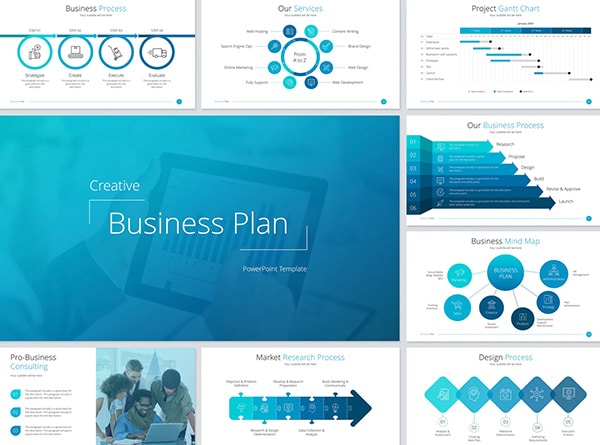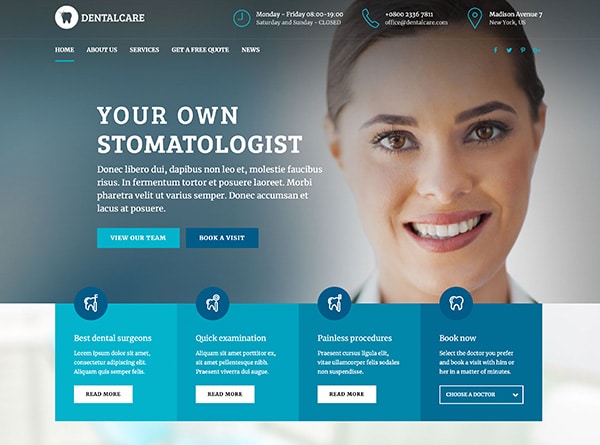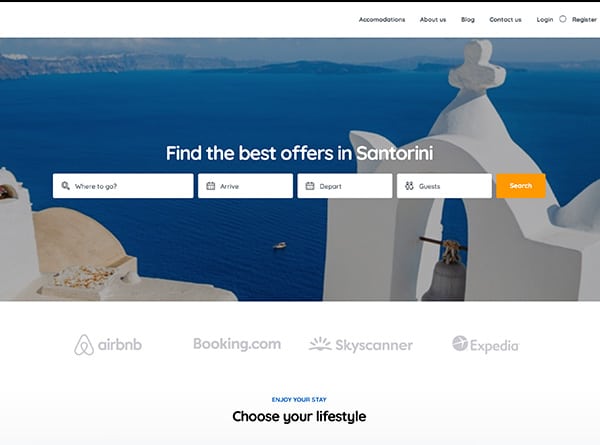
For any business, having an effective website is essential for success. Your website needs to be informative and engaging for potential customers, and it should also be optimized for maximum conversions.
Creating a website that does all these things may seem like an intimidating task, but it doesn’t have to be. In this blog post, we will discuss the steps you can take to create a website that not only looks great but also triggers action from your target audience. Once you’ve put in the hard work to create a beautiful website that reflects your brand we will walk you through how to take it to the next level and optimize your site for conversions for your target audience. Through our tips and tricks, you will learn how to design your site with user experience in mind while utilizing the best tools available to maximize conversions.

1. Define your target audience
The first step in creating a website that will get your targeted audience to convert is to define your target audience. Who are you trying to reach with your website? What are their needs and interests? Once you know who you’re targeting, you can create content and design your site to appeal to them.
If you’re not sure who your target audience is, take some time to research your industry and find out who your competition is targeting. You can also use Google Analytics to get insights into who’s visiting your site and what they’re looking for. Once you have a good understanding of who you want to target, you can start creating content and designing your site with them in mind.
2. Conduct a competitor analysis:
The first step to creating a website that converts is to understand your audience. Take some time to research your target market and create personas for the types of users that will be visiting your site. Then, conduct a competitor analysis to see what other websites in your industry are doing well and identify any areas where you could improve.
When conducting a competitor analysis, start by looking at the overall design of the site. Is it visually appealing? Is it easy to navigate? Does it have a clear call-to-action (CTA)? If not, these are areas you can focus on when designing your own website.
In addition to the design, pay attention to the content on the website. Is it well-written and relevant to your target audience? Does it provide value? If not, you may want to consider hiring a professional copywriter to help you create content that converts.
Finally, look at the website’s conversion rate. This is the percentage of visitors who take a desired action on the site, such as making a purchase or signing up for a newsletter. If the conversion rate is low, this could be an indication that something on the site isn’t working well. Again, this is something you can focus on improving when designing your own website.
3. Optimize your website for conversions with proper structure:
Your website is only as good as its ability to convert visitors into leads or customers. That’s why it’s important to optimize your website for conversions.
When designing a website, it is important to make sure that the site is properly structured. This means that the navigation should be easy to use and the content should be organized in a way that makes sense. For example, if you have a lot of products, you might want to put them in categories so that visitors can easily find what they are looking for.
Additionally, the design of the website should be such that it is easy for visitors to take the action you want them to take. For instance, if you want people to sign up for your newsletter, you should have a prominently placed form where they can do so. If you want people to buy your products, the “add to cart” button should be easily visible and located near the product description.
Finally, it is also important to consider the overall look and feel of the website. The colors, fonts, and images you use should all work together to create a cohesive design that is pleasing to look at. Keep in mind that first impressions are important, so make sure your website looks professional and polished.
Here are a few tips on ways to improve page specific conversions:
- Make sure your website is mobile-friendly. More and more people are using their smartphones and tablets to browse the web. If your website isn’t mobile-friendly, you’re missing out on a huge opportunity.
- Use persuasive copywriting. Your website copy should be clear, concise, and persuasive. It should explain what you do and why someone should use your services or buy your products.
- Use strong calls to action (CTAs). A CTA is a statement or button that tells visitors what you want them to do next. For example, “Buy Now,” “Sign Up,” or “Learn More.” Your CTAs should be placed prominently on your website so that visitors can’t miss them.
- Include customer testimonials and reviews. Customer reviews and testimonials give social proof that others have used your products or services and been happy with the results. This can encourage more people to convert to your website.
4. Create compelling content
Your website’s content is what will ultimately drive conversions. That’s why it’s so important to create compelling, interesting, and relevant content that speaks to your target audience.
Here are a few tips for creating content that will get your website visitors to convert:
1. Write for your target audience
It’s important to write content that appeals to your target audience. Think about what they want to read and what would be most helpful or interesting to them. This will make it more likely that they’ll actually read and engage with your content.
2. Make it easy to read
No one wants to read a wall of text. Breaking up your content into smaller paragraphs and using headlines and subheadings can make it much easier (and more enjoyable) to read.
3. Use strong calls-to-action
Your content should always have a strong call to action (CTA). This could be something like “Sign up for our newsletter” or “Download our e-book.”
Your call to action should be direct and clear, but not pushy. It should feel like the next natural step, not like they are being sold to.
One way to do this is to use active language that clearly states what you want your website visitors to do. For example, if you want them to sign up for your newsletter, make sure your call to action says something like “Sign up for our newsletter” or “Subscribe to our newsletter.”
Another way to make your call to action more effective is to use a strong verb that encourages website visitors to take action. For example, instead of saying “Sign up for our newsletter” you could say “Subscribe to our newsletter.”
Make sure that your call to action is visible and easy to find. Don’t bury it at the bottom of a long page of text – put it front and center where website visitors will see it as soon as they land on your page.
4. Promote your content
Once you’ve created great content, make sure you promote it! Share it on social media, include links in your email marketing campaigns, and reach out to influencers in your industry who might be interested in sharing it with their followers.
5. Show off your unique perspective
What makes you unique in the market? This is a question you should ask yourself before starting to design your website. Once you know what sets you apart from the competition, you can start to focus on how to communicate those differences effectively to your target audience.
Some things to consider when thinking about what makes you unique:
- Your product or service offering
- Your target market
- Your brand identity
- Your company culture
- Your USP (unique selling proposition)
Add references to make sure your claim sure and strong
When making a claim on your website, it is important to have references to back up your assertions. This will make your claim more credible and convincing to potential customers. There are a few ways to add references to your website:
- Include testimonials from satisfied customers. These can be in the form of written testimonials, video testimonials, or both.
- If you have press coverage, be sure to include links to any positive articles or reviews.
- If you have data or research that supports your claims, be sure to include links to those as well.
- If you have any awards or accolades, be sure to list them prominently on your website.
- Finally, if you are a member of any relevant professional organizations, be sure to list those as well.
5. Use A/B testing
When you’re first starting out, it can be difficult to know what works and what doesn’t on your website. That is where A/B testing comes in. A/B testing is a method of comparing two versions of a web page to see which one performs better. You can test anything on your page, from the headline to the call-to-action (CTA).
To start A/B testing, create two versions of the web page you want to test. Make sure to only change one element at a time, so you can isolate the results. Then, use Google Analytics to track the traffic to each page and see which one converts more visitors into leads or customers.
A/B testing is an essential tool for any website owner who wants to increase their conversion rate. By testing different elements on your pages, you can figure out what works best for your audience and make sure your website is as effective as possible.
6. Make the site mobile-friendly:
A mobile-friendly website is one that is easy to use and navigate on a mobile device. This is important because more and more people are using their mobile devices to access the internet.
There are a few things you can do to make sure your website is mobile-friendly:
- Use a responsive design: This means that your website will adjust to different screen sizes automatically.
- Use large fonts and buttons: This makes it easier for people to tap on links and buttons on a small screen.
- Avoid flash: Flash does not work on most mobile devices.
- Optimize images: Large images can take a long time to load on a mobile connection. Make sure your images are sized appropriately for the web.
7. Implement a conversion funnel:
The goal of any website is to get its visitors to take the desired action. This could be making a purchase, signing up for a newsletter, or downloading a white paper. The process that leads a visitor from initial awareness of your website to take that desired action is called a conversion funnel.
There are many factors that go into designing an effective conversion funnel, but here are seven key elements to keep in mind:
- A clear and compelling offer
- An attention-grabbing headline
- A well-designed landing page
- An effective call-to-action (CTA)
- Minimal distractions on the page
- Make sure that your contact information or physical address is in header or footer
- A contact form or contact page
- A smooth and easy checkout process
- A thank you page or post-purchase follow-up
- Keep these steps in mind as you design your website and you will be well on your way to getting more visitors to take the actions you want them to take!
8. Have a clear policy:
It’s important to have a clear policy on your website so that your audience knows what to expect. This policy should be easy to find and understand. Make sure to include:
- What type of content you will allow on your site
- How you will handle user-generated content
- What type of behaviour is not allowed on your site
- How you will handle violations of your policy
- Enforcing your policy can help to keep your site clean and organized, and it can also help to deter bad behaviour. Be sure to set clear expectations with your audience so that they know what is expected of them.
9. Use tracking and analytics
There are a lot of website creation and hosting platforms that offer tracking and analytics as part of their package. Google Analytics is a free platform that provides detailed information about your website traffic, including where your visitors are coming from, what pages they’re looking at, and how long they’re staying on your site. This information can be incredibly valuable in helping you to understand what content is resonating with your audience and what isn’t. Once you have this data, you can make changes to your website accordingly in order to better serve your visitors and encourage them to convert into customers or clients.

























